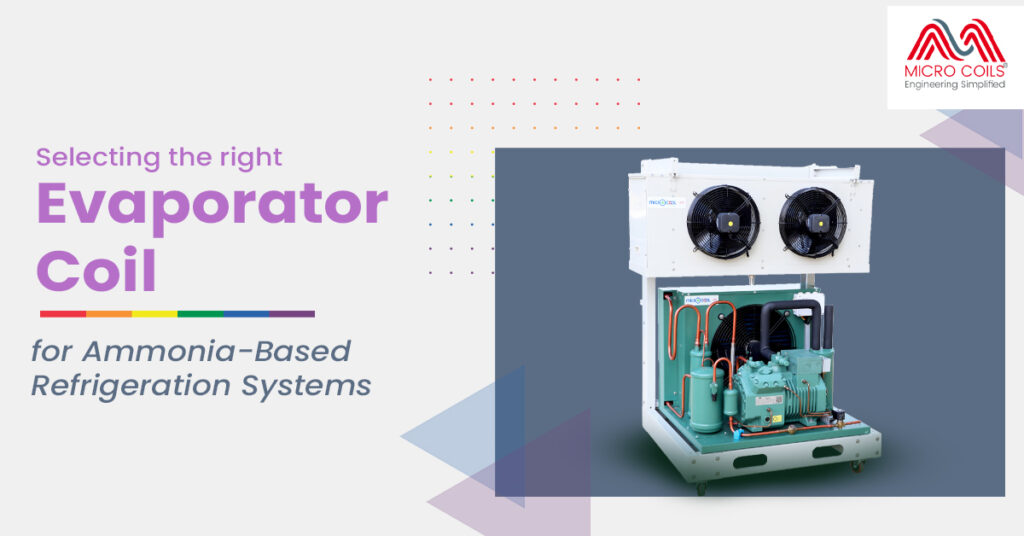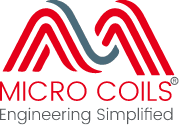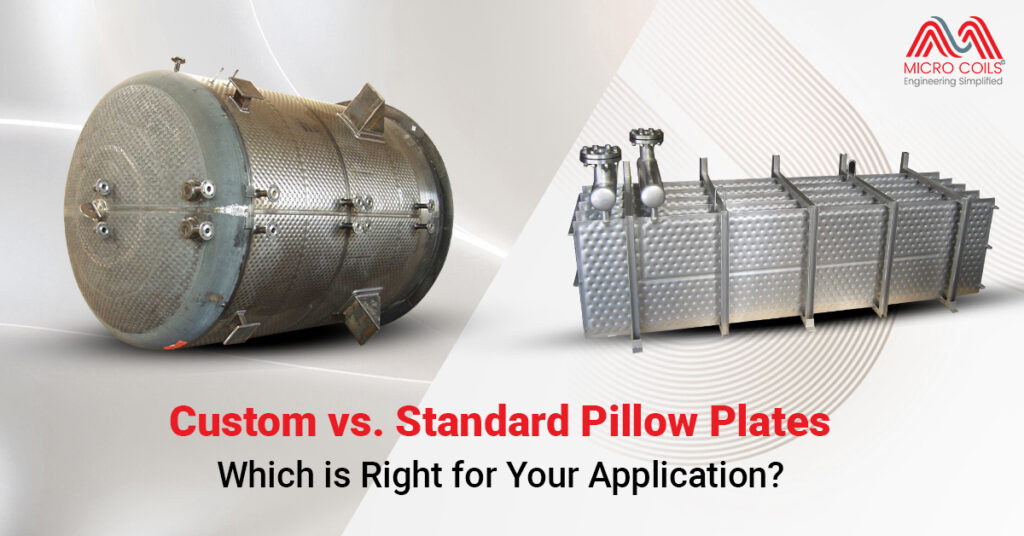
Industrial cooling applications, from food processing plants to massive cold storage warehouses, depend heavily on ammonia-based refrigeration systems. These robust systems maintain precise temperatures through efficient heat exchange processes. The evaporator coil sits at the heart of this operation, making proper selection crucial for optimal performance, energy efficiency, and long-term reliability. Many heat exchanger manufacturers in India now specialize in ammonia-compatible coils and refrigeration coils designed to meet the needs of large-scale industrial setups.
For over 150 years, ammonia (NH3) has proven its worth as an industrial refrigerant. Unlike many synthetic alternatives, this natural substance carries zero ozone depletion potential. Additionally, it produces no global warming impact, establishing itself as an environmentally responsible choice for large-scale refrigeration applications.
Understanding Ammonia Refrigeration Fundamentals
While ammonia refrigeration systems follow the same basic vapor-compression principles as other systems, they possess unique characteristics that significantly impact evaporator coil selection. Ammonia demonstrates excellent thermodynamic properties. Its high latent heat of vaporization and superior heat transfer coefficients enable more efficient cooling with smaller equipment footprints. These same principles also apply in modern ac cooling coil and ac condenser coil designs.
Heat absorption from the cooled space or product occurs within the evaporator coil of an ammonia system. Liquid ammonia undergoes a phase change from liquid to vapor as it enters the evaporator. During this transformation, the refrigerant absorbs substantial amounts of heat. This phase change maintains a constant temperature, which the system’s operating pressure determines.
Lower operating pressures characterize ammonia systems compared to many synthetic refrigerants. This pressure difference affects both piping design and component selection strategies. Furthermore, ammonia’s unique properties influence material compatibility requirements, as certain metals and components must resist corrosion or degradation when exposed to ammonia.
Key Factors in Evaporator Coil Selection
Let’s explore some key elements that play a significant role in evaporator coil selection:
- The foundation of evaporator coil selection rests on temperature requirements. Different applications demand varying temperature ranges, from high-temperature cooling around 35°F to ultra-low temperature freezing below -40°F. Each temperature range presents distinct challenges for coil design and performance optimization.
- Capacity requirements determine the size and configuration of the evaporator coil system. Food processing facilities might need rapid cooling of large product volumes. In contrast, storage warehouses typically require steady-state temperature maintenance over extended periods. These different operational demands necessitate varying coil designs and sizing approaches.
- Environmental conditions within the installation space significantly impact coil selection decisions. High humidity environments may require enhanced defrost capabilities. Conversely, dry conditions might allow for more aggressive fin spacing and design optimization. Corrosive atmospheres, common in certain food processing applications, demand specialized coil materials and protective coatings.
Material Considerations for Ammonia Compatibility
Ammonia’s chemical properties require careful material selection for all system components, including evaporator coils. Steel and iron work excellently with ammonia, forming a protective oxide layer that prevents further corrosion. However, copper and copper alloys should be avoided, as ammonia attacks these materials, leading to rapid deterioration and potential system failure.
Aluminum presents a viable option for ammonia evaporator coils, particularly in dry applications. This lightweight material offers excellent heat transfer properties while maintaining reasonable cost-effectiveness. Nevertheless, aluminum coils require careful consideration of the operating environment, as certain conditions may accelerate corrosion rates.
Stainless steel provides the ultimate corrosion resistance for ammonia applications. Its superior durability makes it ideal for harsh environments or critical applications where coil failure would be catastrophic. The higher initial cost often proves justified through extended service life and reduced maintenance requirements.
Coil Design Configurations and Options
Direct expansion evaporator coils offer the most common configuration for ammonia systems. Liquid ammonia enters the coil and completely vaporizes before leaving, ensuring efficient heat transfer throughout the entire coil surface. This design maximizes heat transfer effectiveness while minimizing refrigerant charge requirements.
Flooded evaporator systems maintain a liquid ammonia level within the coil, typically using a low-pressure receiver or surge drum. This configuration provides excellent heat transfer rates and temperature stability. However, it requires larger refrigerant charges and more complex control systems to maintain proper liquid levels. In industrial setups, both evaporators and condensers play complementary roles — while evaporators absorb heat from the system, condensers efficiently reject it, ensuring balanced refrigeration performance.
Plate-type evaporators utilize flat, corrugated plates to create refrigerant passages. These compact designs offer high heat transfer rates per unit volume while maintaining relatively low pressure drops. They work particularly well in applications requiring frequent cleaning or sanitization, such as food processing facilities.
Performance Optimization Strategies
Fin spacing and design significantly impact evaporator performance in ammonia systems. Closer fin spacing increases heat transfer surface area but may lead to frost accumulation problems in low-temperature applications. The evaporator coil in AC and ac cooling coil design principles often influence industrial evaporator coil selection, though industrial applications typically operate under more demanding conditions.
Air velocity across the coil affects both heat transfer rates and energy consumption. Higher velocities improve heat transfer but increase fan power requirements and may cause excessive moisture carryover in some applications. Optimal air velocity selection balances heat transfer effectiveness with energy efficiency considerations.
Defrost system integration becomes critical in low-temperature ammonia applications. Hot gas defrost systems use high-pressure ammonia vapor to melt accumulated frost. Electric defrost systems provide precise control but consume significant energy. Off-cycle defrost relies on ambient air temperature and works only in specific temperature ranges.
System Integration Considerations
Refrigerant distribution within the evaporator coil affects overall system performance. Proper refrigerant feeding ensures uniform coil utilization while preventing liquid carryover to the compressor. Thermostatic expansion valves, electronic expansion valves, or flooded system controls manage this distribution based on system design requirements.
Control system integration allows evaporator coils to respond to changing load conditions. Temperature sensors, pressure transducers, and humidity monitors provide feedback for system optimization. Modern control systems can modulate refrigerant flow, adjust defrost cycles, and optimize fan operation based on real-time conditions.
Unlike residential ac evaporator coil applications, industrial ammonia systems require sophisticated safety considerations. Ammonia detection systems, emergency shutdown procedures, and personnel safety protocols must integrate with evaporator coil design and installation. These safety systems ensure worker protection while maintaining operational reliability.
Maintenance and Service Considerations
Regular inspection schedules help identify potential issues before they become major problems. Coil cleaning procedures must consider ammonia system safety requirements while maintaining heat transfer effectiveness. Specialized cleaning agents and procedures ensure thorough cleaning without compromising system integrity.
Replacement part availability becomes crucial for minimizing downtime in critical applications. Standardized coil designs and common replacement components reduce inventory requirements while ensuring rapid repair capabilities. Custom coil designs, while potentially more efficient, may present long-term service challenges.
Selecting the right evaporator coil for ammonia-based refrigeration systems requires careful consideration of multiple factors. Temperature requirements, capacity needs, environmental conditions, and material compatibility all influence the optimal coil choice. Proper selection ensures efficient operation, minimizes maintenance requirements, and provides years of reliable service in demanding industrial applications. Understanding these selection criteria helps facility managers and engineers make informed decisions that optimize both performance and operational costs.
Ammonia evaporator coils should undergo visual inspection monthly, with comprehensive technical inspections quarterly. Warning signs include unusual frost patterns, reduced cooling capacity, abnormal pressure readings, visible corrosion spots, refrigerant leaks detected by smell or ammonia sensors, and increased energy consumption without corresponding load changes. Ice buildup in unexpected areas or uneven temperature distribution across the coil surface also indicates potential problems requiring immediate attention.
Working on ammonia evaporator coils requires specialized safety equipment including self-contained breathing apparatus, ammonia-rated gas monitors, and emergency shower/eyewash stations nearby. Technicians must be trained in ammonia handling procedures and hold appropriate refrigeration licenses. The work area needs proper ventilation, and emergency response plans should be in place. All personnel must understand evacuation procedures, and only certified ammonia refrigeration technicians should perform maintenance or repairs on these systems.
Converting evaporator coils from other refrigerants to ammonia is generally not recommended and often impossible due to material incompatibility. Coils designed for synthetic refrigerants typically contain copper components that ammonia will attack and destroy. The pressure ratings, connection types, and internal configurations also differ significantly. It’s safer and more cost-effective to install purpose-built ammonia evaporator coils rather than attempt conversions that could lead to catastrophic failures.
Ammonia evaporator coils handle extreme temperatures well, but design modifications become necessary for temperature swings beyond normal operating ranges. For applications with frequent temperature cycling, thermal expansion joints prevent stress cracking. Coils operating below -20°F require enhanced defrost systems and may need glycol spray systems to prevent ice accumulation. Special attention to refrigerant distribution becomes critical as ammonia’s properties change significantly with temperature variations.
Direct expansion ammonia coils typically achieve better energy efficiency than flooded designs due to lower refrigerant pumping requirements, though flooded systems provide superior temperature control. Plate-type evaporators can improve efficiency over traditional fin-and-tube designs through enhanced heat transfer, but require higher initial investment. Microchannel coils offer the highest efficiency gains, potentially reducing energy consumption, but come with premium pricing and specialized maintenance requirements that may offset long-term savings depending on operating hours and energy costs.





